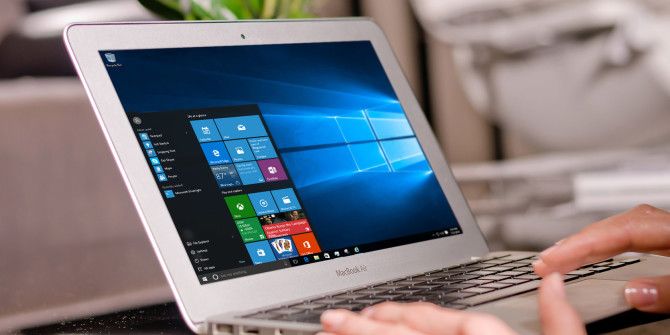Mac computers that have the Apple T2 Security Chip integrate security into both software and hardware to provide encrypted-storage capabilities. Data on the built-in, solid-state drive (SSD) is encrypted using a hardware-accelerated AES engine built into the T2 chip. This encryption is performed with 256-bit keys tied to a unique identifier within the T2 chip.
The latest version of Apple’s operating system for desktop and laptop computers, Mac OS X 10.10 “Yosemite”, encourages users to turn on the company’s FileVault disk encryption, as the.
The advanced encryption technology integrated into the T2 chip provides line-speed encryption, but it also means that if the portion of the T2 chip containing your encryption keys becomes damaged, you might need to restore the content of your drive from a backup. This content includes system files, apps, accounts, preferences, music, photos, movies, and documents.

Always back up your content to a secure external drive or other secure backup location so that you can restore it, if necessary. You should also turn on FileVault for additional security, because without FileVault enabled, your encrypted SSDs automatically mount and decrypt when connected to your Mac.
Make a backup
Set up Time Machine or another backup method to regularly back up your Mac to a secure external source.
Files that you store in iCloud Drive, as well as photos and videos that you store in iCloud Photo Library, are automatically uploaded to iCloud. When you use iCloud Photo Library, full-resolution photos and videos are stored on your Mac by default and included in a Time Machine backup. If you choose to optimize iCloud Photo Library on your Mac, the full-resolution originals are not included in a Time Machine backup.
Turn on FileVault
Though the SSD in computers that have the Apple T2 Security Chip is encrypted, you should turn on FileVault so that your Mac requires a password to decrypt your data.
To turn on FileVault, follow these steps:
- Choose Apple menu () > System Preferences, then click Security & Privacy.
- Click the FileVault tab.
- Click , then enter an administrator name and password.
- Click Turn On FileVault.
Disk Utility User Guide
When you format an internal or external storage device, you can encrypt and protect it with a password. If you encrypt an internal device, you must enter a password to access the device and its information. If you encrypt an external device, you must enter the password when you connect the device to your computer.
If you encrypt an external storage device, you can’t connect it to an AirPort base station for Time Machine backups.
You can enable 'Subtitles/CC' in this video Running into issues installing downloaded apps on your Mac in Sierra or High Sierra or Mojave? Is your Mac tell. Mac App Store: The Mac will only run apps downloaded from the Mac App Store. Mac App Store and identified developers: When you try to open a new app and it’s not on the list of identified. How to download apps on computer. While the Mac is a little more open than iOS - the only way to get third party apps onto your iPhone and iPad is to download them from the iOS App Store - there are still a lot of hoops to jump.
WARNING: To encrypt and protect the device with a password using Disk Utility, you must erase the device first. If the device contains files you want to save, be sure to copy them to another storage device or volume.
How To Encrypt Apps On Mac Os X Mojave
If the device contains any files you want to save, copy them to another storage device or volume.
In the Disk Utility app on your Mac, choose View > Show All Devices.
If Disk Utility isn’t open, click the Launchpad icon in the Dock, type Disk Utility in the Search field, then click the Disk Utility icon .
In the sidebar, select the storage device you want to encrypt.
Click the Erase button in the toolbar.
Enter a name for the volume.
Click the Scheme pop-up menu, then choose GUID Partition Map.
Location Based Toll-Free Phone Numbers. Gotomeeting mac app download. No need to manually transcribe or copy/paste dial-in information, the add-in automatically populates every invitation with:. Location Based Toll Phone Numbers. Meeting URL with Computer (VoIP) Audio.
Click the Format pop-up menu, then choose an encrypted file system format.
Enter and verify a password, then click Choose.
Thursday, May 15, 2008at12:25 PMBy John Grabowski, Google Mac TeamAs you probably know, Googlers are offered to work on what we're really passionate about. However, integration with the client was a little basic. Google app launcher. Simple tasks, like creating 'hello world', required quite a bit of typing. It is still amazing to realize that Google will let external developers run web applications on Google infrastructure. On the Google Mac Team, one of our passions is keeping the Mac a first-class citizen for Google products and services.When I first saw, I was excited at the possibilities.
To change the password later, select the volume in the sidebar, then choose File > Change Password.
(Optional) If available, click Security Options, use the slider to choose how many times to write over the erased data, then click OK.
Secure erase options are available only for some types of storage devices. If the Security Options button is not available, you can’t use Disk Utility to perform a secure erase on the storage device.
Click Erase, then click Done.
You can encrypt your data without erasing it by turning on FileVault in the Security & Privacy pane of System Preferences (see Encrypt Mac data with FileVault).
You can also encrypt a disk and protect it with a password without erasing it. See Encrypt disks or memory cards to protect your Mac information.